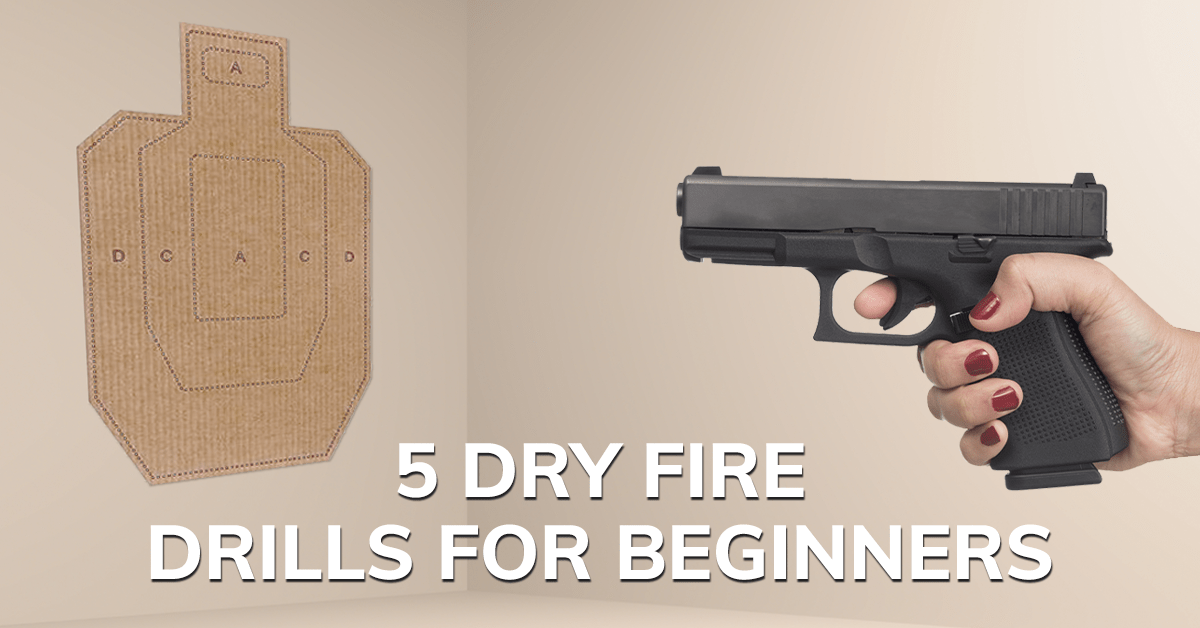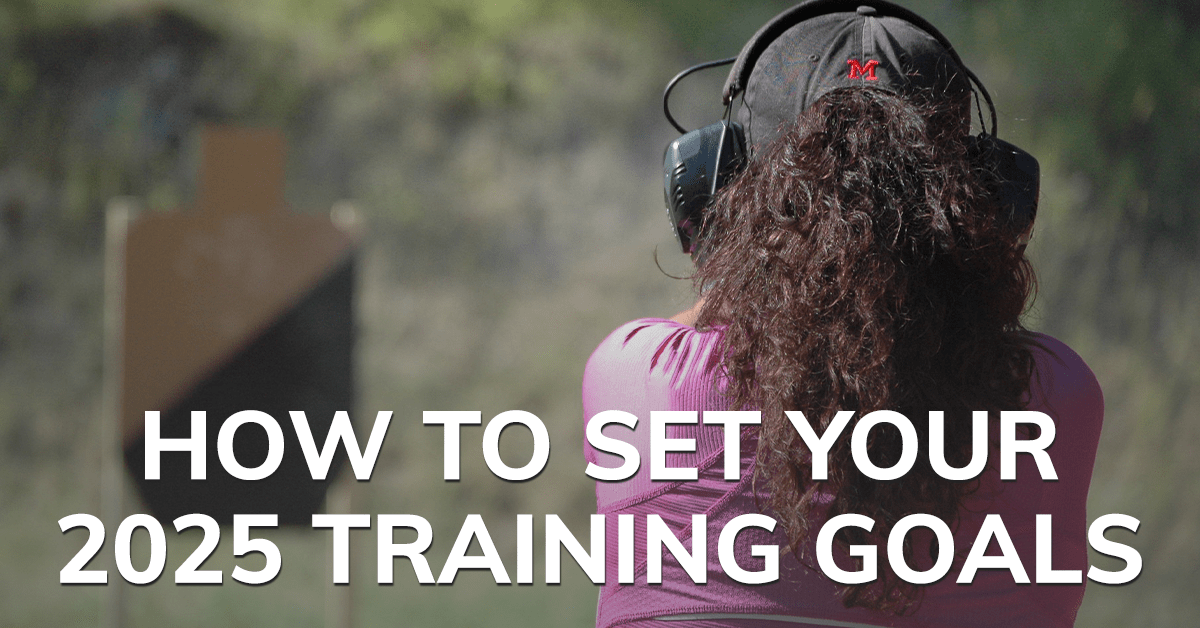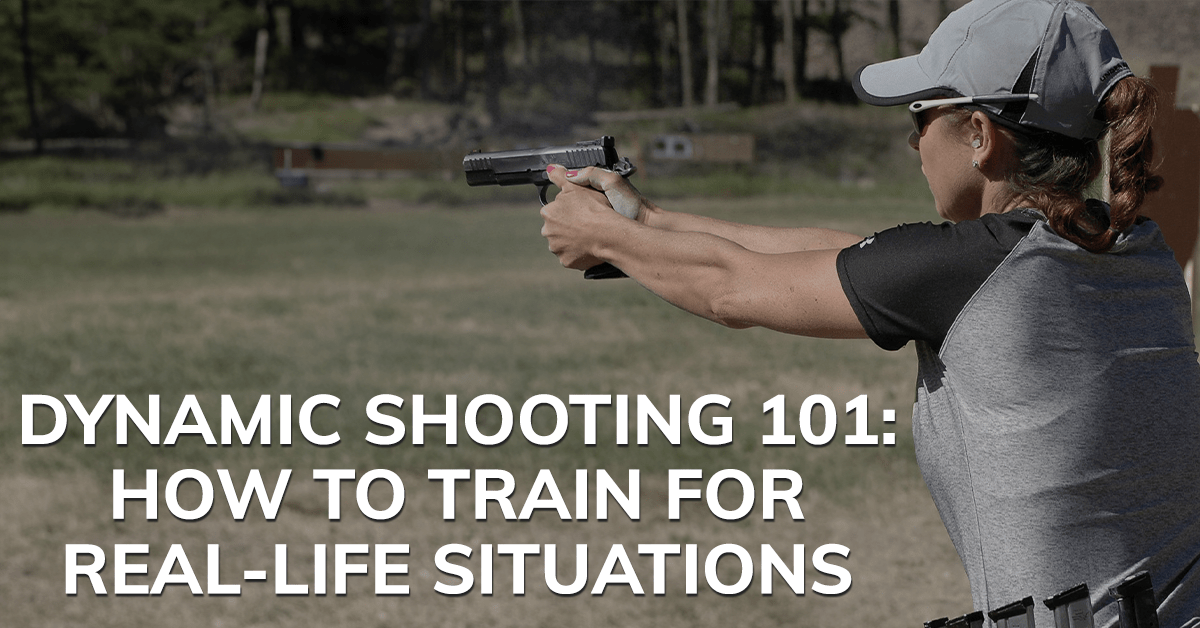Orders Over $100 Ship FREE (USA)!
Orders Over $100 Ship FREE (USA)!
CONCEALED CARRY
(Apparel with holster pockets or concealed-carry features)
PARTS & GEAR
RANGE STYLE
Gift shopping & not sure about size or style? Give a gift card instead!
GIFT IDEAS
EXPLORE
BFCM Sale 20% Off every item! EXTENDED
Black Friday & Cyber Monday EXTENDED: Indulge in Luxury, Pay Less.
How to Create a Dry Fire Routine You'll Stick With
4 min read
Dry fire practice is a fantastic way to improve your shooting skills, but it's hard to find the time. Life gets busy and you keep meaning to sneak in some dry fire practice, but you have too many other things to do. Your intentions are good and you truly want to get better, but it never ends up happening.
So what's the solution? How can you make dry firing more fun and less of a chore so you won't procrastinate? The answer is simple: start small and have a well-defined plan before you start!
Here are several things you can do to create a dry fire shooting routine that will stick so that no matter where life takes you, your skills will always be improving.
Form a Dry Fire Plan and Keep it Simple
The key to creating a plan you'll actually stick to is to keep your plan simple. Dry fire practice doesn't have to take a lot of time and the results are cumulative - you can make serious progress with short periods of consistent practice. To make sure your plan doesn't get out of hand:
Time-box your practice sessions - choose a realistic amount of time you know you'll be able to commit to and gradually increase the amount of time. For example, write down that you'll practice 5 minutes, 5 times a week for the first month, then increase that time to 10 minutes for the next month.
Choose your drills in advance and limit the number performed each session - Your notebook should include a page with a list of several drills that address the areas you want to improve. Choose 2-3 drills in advance of your sessions so when you get started, you won't waste time trying to figure it out. We have a list of shooting drills you can choose from or you can find plenty of them on the internet.
Focus on areas you want to improve - similar to working out, you can choose drills to work on that address the areas of shooting you want to improve and you can change them up throughout the week. For example, one session you can work on strong hand/support hand, and the next session, you can work on drawing from the holster or magazine reloads. The more variety you include in your routine, the more likely you'll stick with it.
Put Your Plan on Paper
Since your dry fire plan will be simple, you may be tempted to keep your plan in your head, but you need to get it on paper (or in a doc on your computer) to make it real. We recommend grabbing a new notebook you can use just for your dry fire sessions. When you're practicing, you'll want to make notes, create benchmarks, and track your progress, so keeping a single notebook is a great way to log all of your notes in the same place.
Find the Right Location
Find an appropriate place for your dry fire sessions and use that place each time you practice. Pick somewhere where you won't have any distractions. If possible, try finding a relatively quiet spot where there's nothing else going on. When you do find your perfect spot, make sure there's never ammo in the room and each time you start a session, triple check to make sure your firearm and magazines are unloaded before you begin.
Set a Schedule
To make sure your fire routine becomes an integrated part of your life, set a regular schedule and put it on your calendar. The goal is to make dry fire practice something you do without having to think about it too much (like brushing your teeth), but when you're starting out, do everything you can to remind yourself of your upcoming session. You can also sprinkle a few post-it notes on your desk or bathroom mirror to give yourself gentle reminders throughout the day.
Find a Dry Fire Accountability Buddy
Having an accountability buddy is a great way to make sure your routine stays on track, and it's a lot more fun! You can sync up your dry fire schedule with your buddy and compare notes and tips, plus you can create friendly competitions. When you're working with someone else, you can get better faster because you're creating goals that help you push yourself to improve.
Combat Dry Fire Fatigue by Switching Things Up
Don't be surprised if you hit a rut after a while, it happens to everyone. You can push through those ruts by switching things up a bit - own a rifle or shotgun? Rotate your firearms every week. Do you have a semi-auto and a revolver? Change things up by alternating weekly between the two. You can also add variety by rotating through drills, so make sure you have enough drills in your notebook to switch them out every couple of weeks.
Here's a Sample Dry Fire Routine to Get You Started
We've given you a lot of advice on what to do when you're creating a dry fire plan and how to stick to it, but what does a routine actually look like? Here's a sample below that you can use as a dry fire routine template:
Dry Fire Routine - Your Name
Mon/Wed/Fri - 10 minutes (6pm to 6:10pm)
Goals:
- Decrease time to first shot from 3 seconds to 2 seconds
- Get rid of flinch
- Improve accuracy when shooting with strong/support hand
Drills to practice:
Confirm improvement in live fire practice by shooting the same drills once every two weeks.
Like we said above, keep it simple! This dry fire routine easily fits on less than one piece of paper and doesn't feel overwhelming at all. Once you're done putting your plan on paper, take a look - if it feels intimidating, rework it by reducing the days, time, or number of drills. You can even start with a single drill that only takes a couple of minutes to complete. As long as you're practicing consistently, you'll see a noticeable improvement the next time you head to the range.
Also in Skill Building: Train & Practice

5 Drills for Anyone New to Dry Fire
3 min read
This guide covers 5 simple drills for beginners to make dry fire a consistent, effective training routine.

How to Set Your 2025 Training Goals
3 min read

Dynamic Shooting 101: How to Train for Real-Life Situations
4 min read

